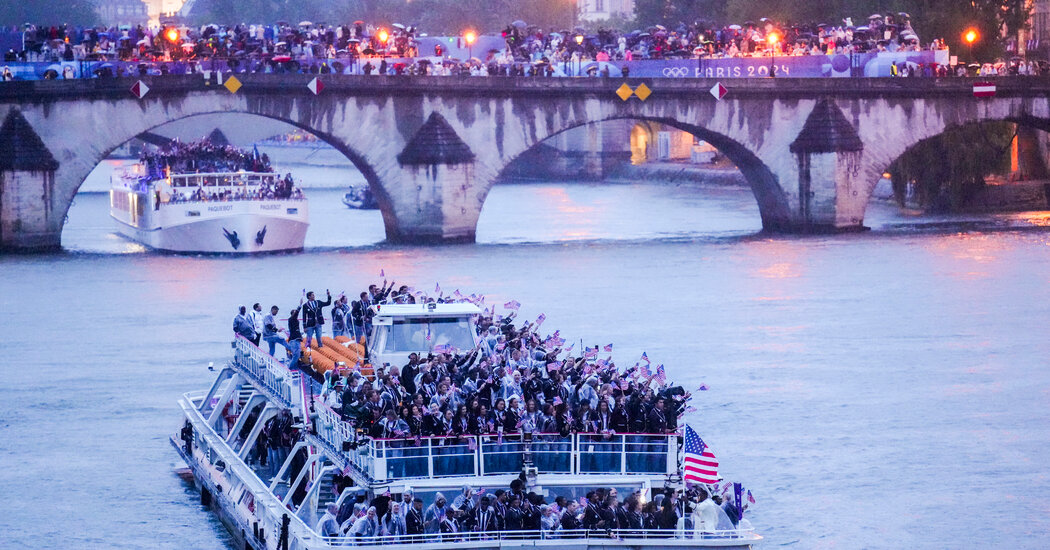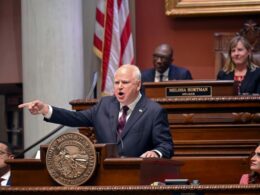About six hours before Celine Dion gutted out the final number of the Paris Olympics opening ceremony, the streaming service Peacock emailed a promo for its coverage with the headline, “We’ll all be crying by the end of this.” So maybe they knew more than they were letting on.
The homestretch of the marathon four-hour broadcast, when the celebrating athletes and dance extravaganzas and speeches were out of the way, had some starkly lovely images and moving moments: the speedboat carrying former champions up the Seine in the dark (like a real-life echo of Leos Carax’s great water-skiing scene in “Les Amants du Pont-Neuf”). The grand scale and dramatic lighting of the Louvre as the torch was carried, like a firefly’s flame, through its courtyards. The torch coming to the hand of a 100-year-old French cyclist, steady in his wheelchair, and Dion defying her illness to belt out “Hymne à l’Amour” on the Eiffel Tower.
,
But it took endurance to get there — for the athletes, performers and spectators drenched by the summer rain, and for the viewers at home watching the ceremony as it was conceived by the French organizers and packaged by NBC and Peacock.
,
The decision to abandon the event’s traditional format — the long, formal parade of athletes marching into a stadium — for a waterborne procession along the Seine intercut with performances had a twofold effect. It turned the ceremony into something bigger, more various and more intermittently entertaining. But it also turned it into something more ordinary — just another bloated made-for-TV spectacle, like a halftime show or awards show or holiday parade that exists to promote and perpetuate itself.
Those spectacles can be fun, of course, and the traditional Olympics opening ceremony could feel dull and interminable. But it was not quite like anything else, and it played a key part in making the Games feel special.







